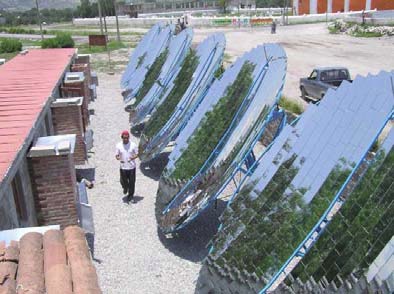In a recent post, we mentioned a video on the Global Post website about transport developments in Mexico City. Global Post has published another short video in the same series, that is equally interesting and valuable as a teaching resource:
My first experience of a solar-powered stove was during an environmental education workshop in the state of Michoacán some 25 years ago. I was underwhelmed by its performance, but the more modern (and much more efficient) designs featured in this video definitely merit a much closer look.
The video focuses on the work of Gregor Schäpers, a self-taught solar engineer, and his company Trinysol, that makes solar-powered stoves and boilers. The company, located in the village of El Sauz in the state of Hidalgo, a short distance north-east of Mexico City, is a good example of the development of appropriate technology.
One of Trinysol’s first projects was working with a women’s cooperative in the village of San Andrés, who produce a sweet syrup from green agave plants. The process involves hours of cooking, and therefore requires a large input of energy. Prior to the installation of Scheffler reflectors and solar-powered hotplates, the women relied on gas.
Schäpers has since set up hundreds of solar-powered boilers, and dozens of solar stoves in the region. Some are designed for individual families; others are suitable for small-scale industrial use, for example to provide energy for bakeries (panaderias) or tortilla-making plants (tortillerias).
According to the figures offered in the video, it costs about 4,000 dollars to build and install heating for a panadería, but can save the owners up to 5,000 dollars a year in energy costs. The investment is therefore fully recouped within a year. The system should last for 30 years, so a solar-powered system represents a significant improvement to the economics of many small businesses, giving them the opportunity to expand or allocate more of their scarce resources elsewhere.

Sorry, the comment form is closed at this time.